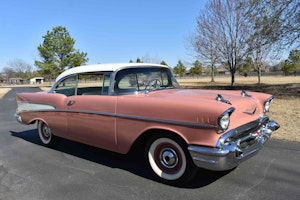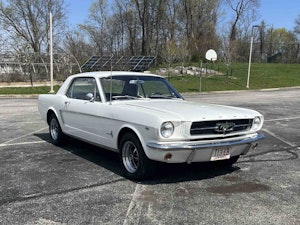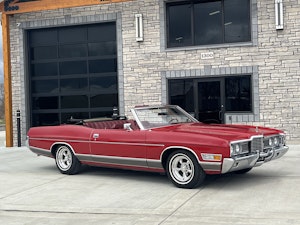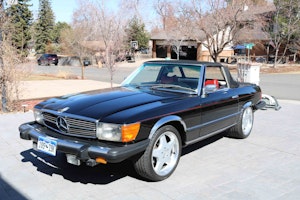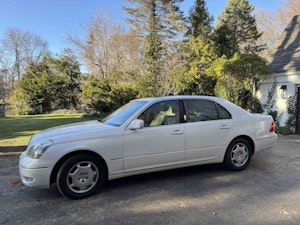Media | Articles
Leap of Faith
Two men take on nearly impossible projects
Some cars are simple and some are complex. In most cases, it’s best to leave those cars with engineering mysteries or nonexistent parts to guys with incredible skills or well-endowed checkbooks. Sometimes, though, people break these common-sense rules and go to automotive destinations that may seem to court danger, while tackling projects that are seemingly beyond their means. All it takes is a simple leap of faith.
Standard of Excellence
South Carolina’s Paul Ianuario isn’t your average car guy. The retired engineer has owned a number of Brass Era cars and over time sold them off, but he never fell out of love with the automotive pioneers. A circuitous path through car shows, museums, contacts and advertisements led him to a reputedly 90-percent complete, but disassembled, 1908 single-cylinder Cadillac Tulip Victoria — a rare and historically significant automobile — 1,800 miles away in Stillwater, Minnesota. After many phone calls and a tentative deal, Ianuario and a friend set off to collect the car. Ianuario was “gobsmacked” by what he saw: Most of the car was there, as represented, but everything was dented, rusted and in need of complete refurbishment. Most of the original wood body and its structure were long gone, but he could see enough of the car to connect the dots. Given enough time, money and a lot of help, he knew he could resurrect this pile of parts back into a 1908 Cadillac.
Ianuario is not the guy who would take this truckload of junk to a restorer, dump it off and write a big check. Instead, he vowed to do it himself in his well-equipped home shop, with the help of family, friends and other Brass Era Cadillac owners. Ianuario did all the machine work to the engine and chassis, the fabrication of replacement parts, the body reconstruction (with the help of a knowledgeable woodworking expert), the painting and pinstriping, etc. This does not even begin to cover all the hours of research and correspondence needed to source parts and do the restoration. The odyssey began in 1984, with Ianuario’s goal to have the car complete and restored to show condition for Cadillac’s Centennial celebration in 2002.
Marketplace
Buy and sell classics with confidence
Paul has no regrets about buying the car or undertaking the task, but laughs remembering that when he and his friend looked at the heap of dented and rusted parts, his buddy said, “Only a fool would attempt to restore this car.” Ianuario exclaimed, “I’m the biggest fool I know, so why not me!”
Spheres of Influence
Robert Blackmon of Los Angeles, is a heavy truck owner/operator, but his automotive passions have always leaned toward foreign cars. He loved the Citroën SM on first sight and vowed to own one someday. That day came in 1982, when he bought a ’72 SM from Gerald Wiegert of Vector fame. The Maserati V-6 engine was damaged and the car was a non-runner, but the price was right. Working alone, with average hand tools and a cryptic shop manual, he took the car apart and commissioned a “cut corners” engine rebuild. That engine lived for nearly 80,000 miles but grew tired, so Blackmon decided the next disassembly would be a more proper restoration — including a color change to the current silver — and a top-quality engine overhaul. Blackmon credits SM World guru Jerry Hathaway with “parts, machine work and tons of good advice.”
Blackmon’s SM has now covered around 200,000 miles and, save for the patina of use and enjoyment, drives beautifully. What made this self-taught home mechanic believe he could restore and maintain such a complex French-Italo hybrid full of cams, carbs and a high-pressure hydraulic suspension system? “It’s still mechanical — that’s the difference,” reflects Blackmon. “There’s no sensors or computers. It’s a detailed but very mechanical car, so I just figured it out. It required basic tools, good advice and patience. Lots of patience.”
Why? It’s unlikely that we’ve answered the question of “why” people take on seemingly insurmountable cars. Those motivations are often very personal and sometimes emotional — but every enthusiast can look at a forlorn vehicle through the proverbial “rose-tinted glasses” and see it straight and sparkling once again, and that’s the real crux of the matter.
Perhaps President John F. Kennedy unknowingly summarized this automotive “leap of faith” notion during his famous 1961 speech announcing that America would fly man to the moon, and safely home again. He said: “We choose to go to the moon in this decade and do the other things, not because they are easy, but because they are hard.”
I wonder if JFK ever restored a 1908 Cadillac or worked on a Citroën hydraulic suspension system?

